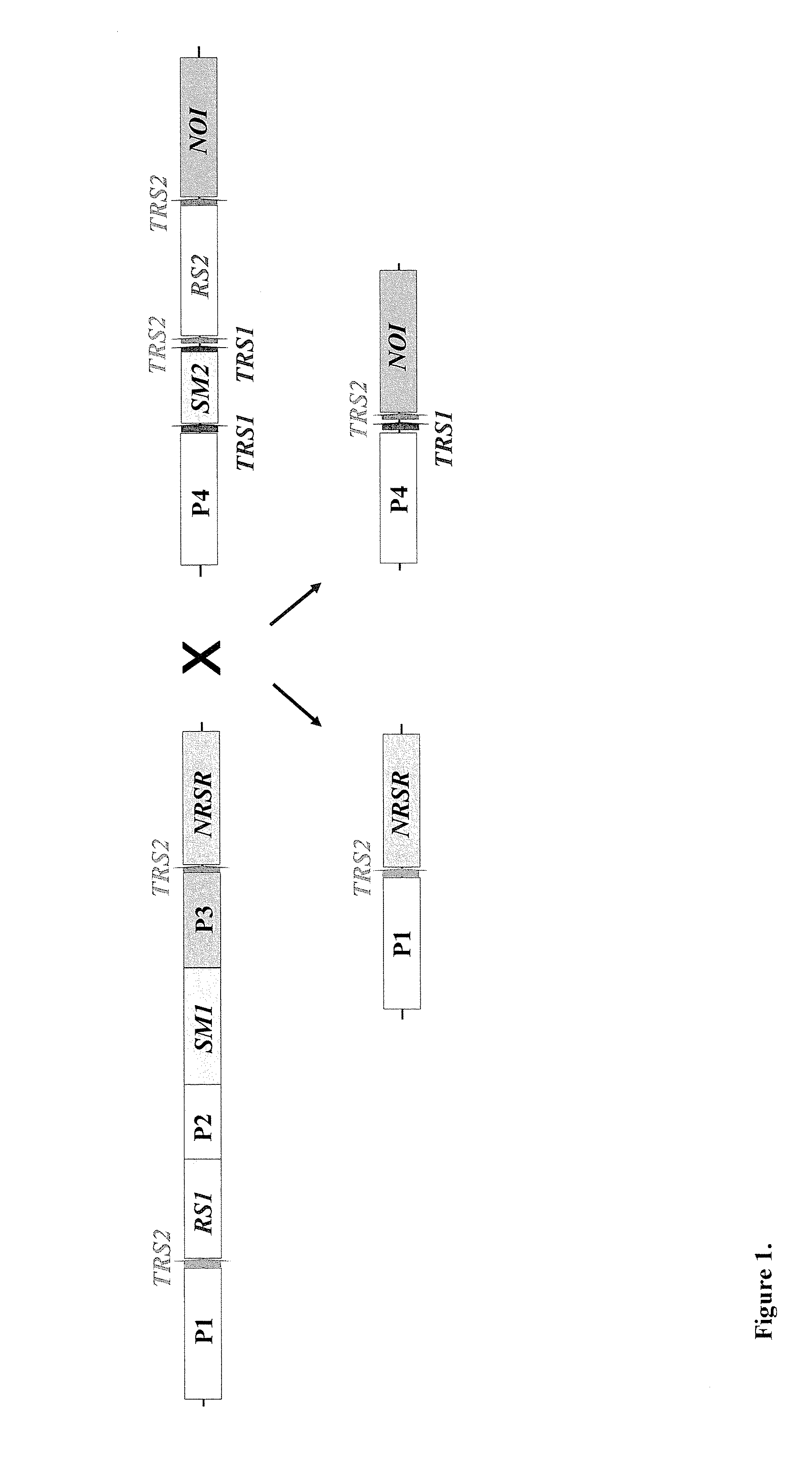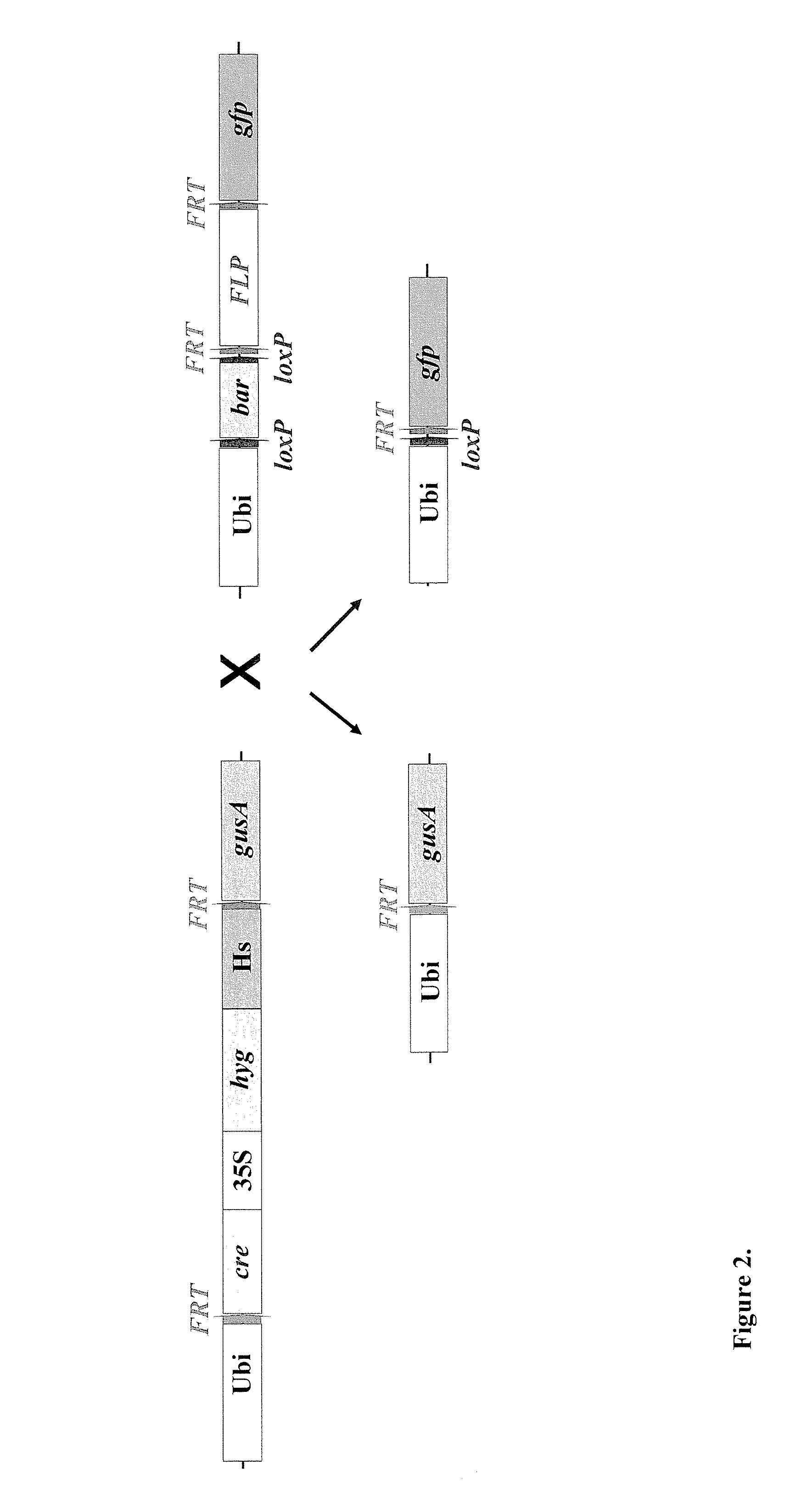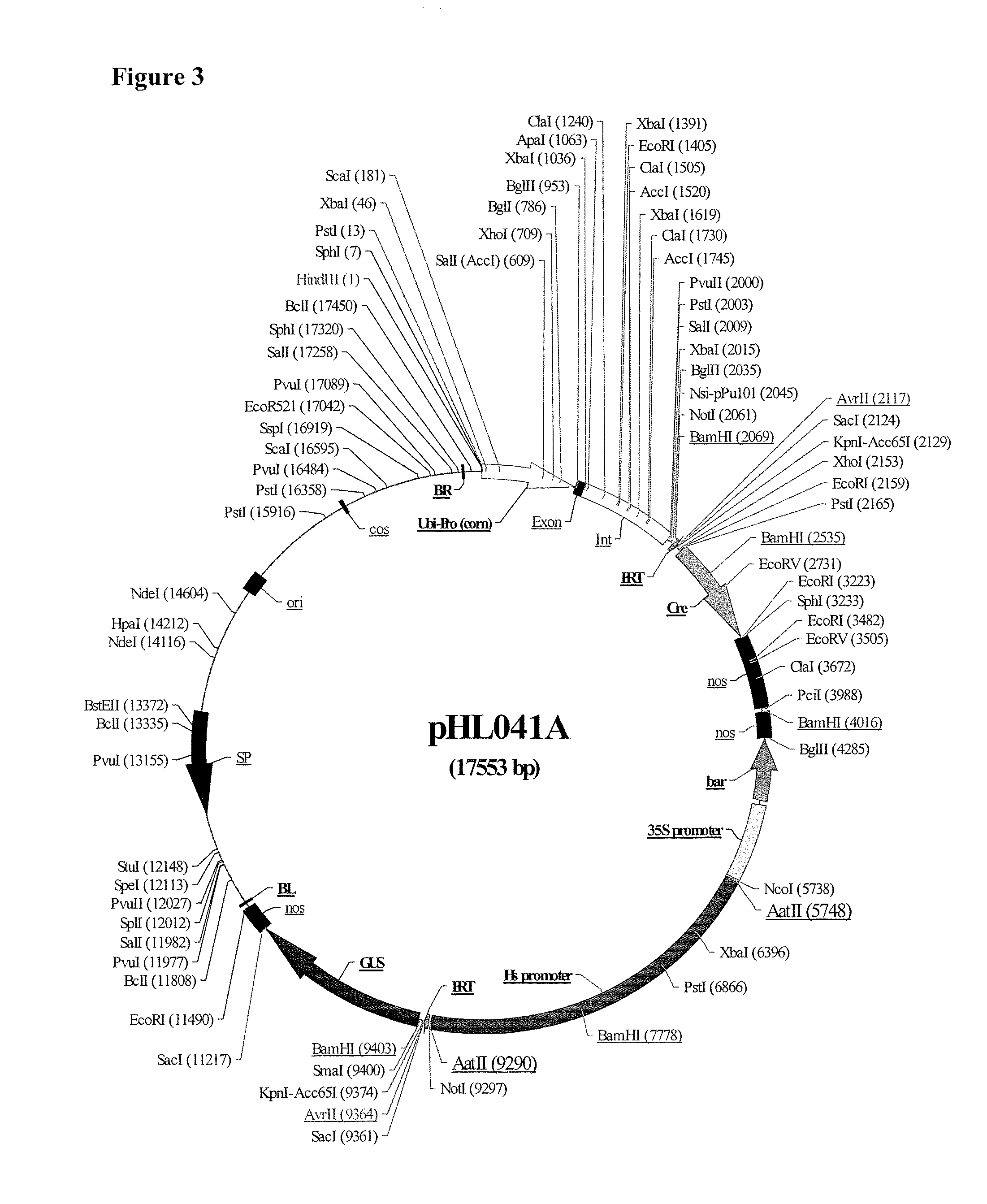Methods and compositions for an integrated dual site-specific recombination system for producing environmentally safe and clean transgenic plants
a transgenic plant and dual site technology, applied in the field of methods and compositions for producing transgenic plants, can solve the problems of little information available on the potential risks of commercialization and large-scale seed production of perennial transgenic grasses, and achieve the effect of enhancing capability and public acceptan
- Summary
- Abstract
- Description
- Claims
- Application Information
AI Technical Summary
Benefits of technology
Problems solved by technology
Method used
Image
Examples
example 1
[0151]The present example is provided to demonstrate the use of a dual site-specific recombination system such as that described herein. In this example the site-specific recombinases for eliminating unwanted transgenes are FLP / FRT and Cre / lox. This, in combination with controllable total sterility technology (i.e., total vegetative growth or no or reduced sexual reproduction), will produce environmentally safe, clean transgenic turfgrass plants. As illustrated in FIG. 2, two transgenic lines are produced. The first line will contain a Cre-expressing construct, pSBUbi-FRT-Cre-35S / hyg-Hs-FRT-gusA, in which the recombinase Cre-coding sequence is linked to a CaMV35S promoter-driving the marker gene, hyg and followed by the soybean heat-shock promoter, Hs, which is flanked by directly oriented FLP recombinase target sites, FRTs. This FRT-flanked cassette serves to separate a rice Ubi promoter from a reporter gene gusA (in other exemplary embodiments, an RNAi construct or an antisense se...
example 2
[0154]Two constructs are prepared for delivery into creeping bentgrass using Agrobacterium-mediated plant transformation, creating transgenic lines harboring FLP-containing or Cre-containing constructs, respectively. Using pSB11-based binary vectors (Komari et al., 1996) for the construction, a reliable Agrobacterium-mediated turfgrass transformation procedure is established that enables routine production of transgenic turfgrass plants (Luo et al., 2004a; b; 2005).
example 3
Production of Constructs, pSBUbi-FRT-Cre-35S / hyg-Hs-FRT-gusA, and pSBUbi-loxP-bar-loxP-FRT-FLP-FRT-gfp
[0155]Two pSB11-based Agrobacterium binary vectors, pSBUbi-FRT-Cre-35S / hyg-Hs-FRT-gusA, and pSBUbi-loxP-bar-loxP-FRT-FLP-FRT-gfp (FIG. 2) will be prepared for creeping bentgrass transformation.
[0156]To synthesize the Cre-containing construct, pSBUbi-FRT-Cre-35S / hyg-Hs-FRT-gusA, we will first clone the 35S-hyg fragment, released from pSB35S-hyg through HindIII digestion, into the corresponding site of the binary vector, pSBUbi-FRT-hyg-FRT-gusA to replace hyg, producing pSBUbi-FRT-35S / hyg-FRT-gusA. The correct orientation of the inserted 35S-hyg fragment will be verified by restriction digestions and sequencing. The Cre-coding sequence plus nos terminator will then be released by XbaI (flushed by Klenow treatment) and EcoRI digestions from pSBbar-Ubi / Cre, (provided by Dr. Thomas K. Hodges at Purdue University). The Cre-nos fragment will be inserted into the SnaBI-EcoRI sites of pSBUbi...
PUM
| Property | Measurement | Unit |
|---|---|---|
| temperature | aaaaa | aaaaa |
| antibiotic resistance | aaaaa | aaaaa |
| herbicide resistance | aaaaa | aaaaa |
Abstract
Description
Claims
Application Information
 Login to View More
Login to View More - R&D
- Intellectual Property
- Life Sciences
- Materials
- Tech Scout
- Unparalleled Data Quality
- Higher Quality Content
- 60% Fewer Hallucinations
Browse by: Latest US Patents, China's latest patents, Technical Efficacy Thesaurus, Application Domain, Technology Topic, Popular Technical Reports.
© 2025 PatSnap. All rights reserved.Legal|Privacy policy|Modern Slavery Act Transparency Statement|Sitemap|About US| Contact US: help@patsnap.com



